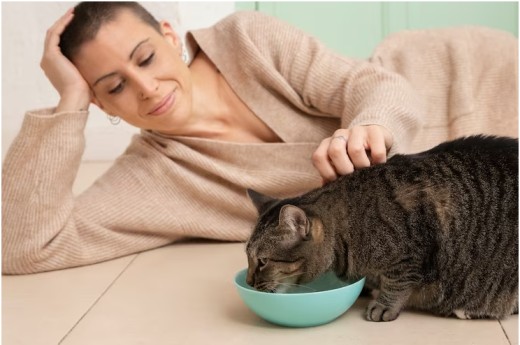Introduction
Cats are adored members of households. Their playful behavior, soothing personalities, and independent nature make them wonderful companions.
However, many cat owners often face the issue of their friends vomiting after meals.
If you’ve ever wondered how to prevent this problem and ensure mealtime for your pet, you’ve come to the right place.
In this guide, we will delve into the world of cat bowls. Provide tips and recommendations on selecting the ideal one to reduce vomiting.
Understanding the Vomiting Issue
Before we explore solutions, let’s take a moment to understand why some cats experience vomiting after eating.
1. Eating Too Quickly
Some cats have a tendency to devour their food rapidly, leading to overeating and subsequent vomiting.
2. Food Allergies or Sensitivities
Certain cats may have allergies or sensitivities to foods, causing them to vomit. It is crucial to rule out any underlying concerns.
3. Bowl Design Concerns
The design of a cat bowl can also contribute to vomiting issues. For example, brachycephalic breeds might encounter difficulties with bowls.
Factors to Consider When Selecting a Cat Bowl
1. Choice of Bowl Material
The material of the bowl is a consideration. You can explore options like steel, ceramic, or plastic bowls.
2. Bowl Design
It’s advisable to opt for anti vomiting cat bowls that have wide shapes, as they help prevent whisker fatigue and make it easier for your cat to reach their food.
3. Features to Prevent Vomiting
Look for bowls that come with features specifically designed to slow down eating, such as built in obstacles or ridges.
4. Ease of Cleaning
Select bowls that are easy to clean and maintain. In general, stainless steel and ceramic bowls are considered hygienic compared to others.

Types of Cat Bowls with Anti Vomiting Features
1. Slow Feeder Bowls
- Maze Design Bowls
These bowls incorporate mazes or patterns that require cats to put in some effort while eating, thereby slowing down their pace.
- Puzzle Feeders
Puzzle feeders are bowls that encourage cats to use their paws or tongues in order to access their food.
2. Elevated Bowls
Elevated bowls raise the food off the ground, promoting a feeding posture and reducing the likelihood of vomiting.
3. Specialized Anti Vomiting Bowls
Certain bowls are specially crafted with the aim of minimizing vomiting in cats. They often feature shapes that discourage gulping.
Choosing the Perfect Cat Bowl
1. Take Note of Your Cats Eating Habits
Observe how your cat eats. If they tend to gobble up their food, you might want to consider a bowl that promotes eating.
2. Consider Any Allergies or Sensitivities
If your cat has any known food allergies or sensitivities, it’s best to consult with your veterinarian to ensure their diet is suitable.
3. Take Your Cats breed into Account
Breeds like Persians and Scottish Folds may benefit from using bowls specifically designed for faced cats.

Transitioning Your Cat to a New Bowl Made Easy
1. Gradual Introduction
Introduce the bowl gradually by mixing it with theirs. Slowly increase the amount of food in the bowl over a few days.
2. Create Positive Associations
Encourage your cat to associate the bowl with experience. Place. Their favorite toy is near the bowl.
3. Observe Their Response
Pay attention to how your cat reacts to the bowl. Some cats may adjust quickly, while others may need time and patience.
Extra Tips for Preventing Vomiting
1. Split Meals
Consider dividing your cat’s food intake into meals throughout the day to prevent overeating.
2. Encourage Slower Eating; Manage Your Cats Eating Habits
One way to regulate your cat’s eating speed is by placing a smooth object, like a clean rock, in their food bowl. This encourages them to eat as they navigate around the obstacle.
Conclusion
Experiencing vomiting after meals can be distressing for both cats and their owners. However, there are strategies you can implement and appropriate cat bowl choices to help address this issue.
By considering your cat’s eating habits and potential food allergies or sensitivities when selecting a bowl, you can create a pleasant and comfortable mealtime experience for your feline friend.
With patience and proper care, you’ll be able to bid farewell to any vomiting concerns and ensure your cat enjoys every meal with health and happiness.